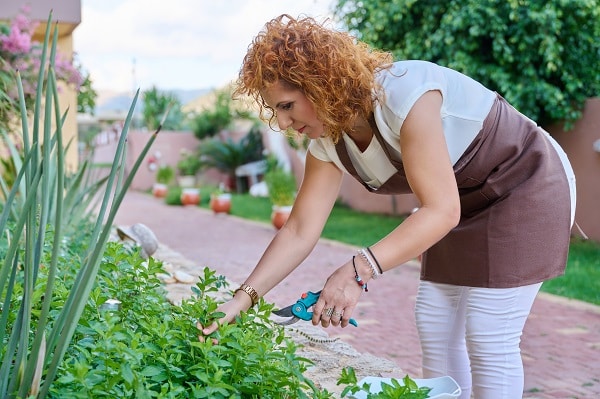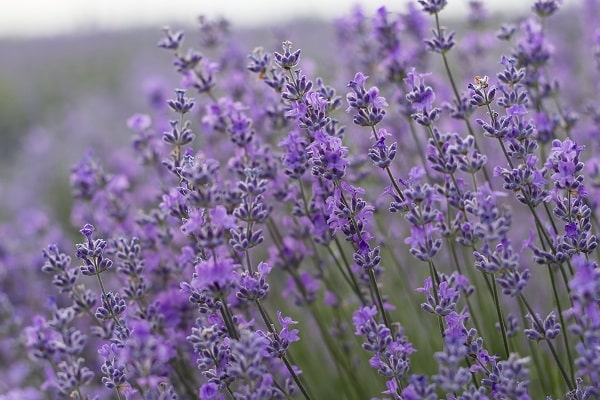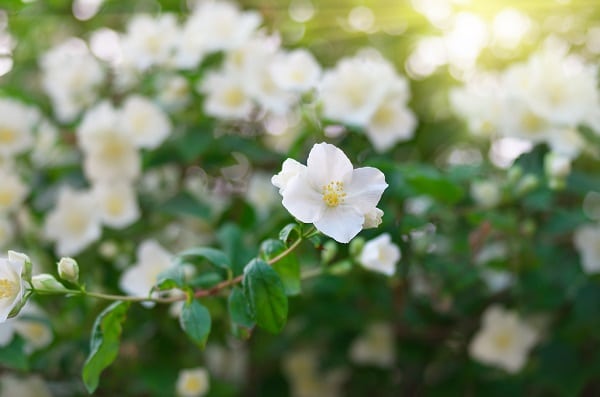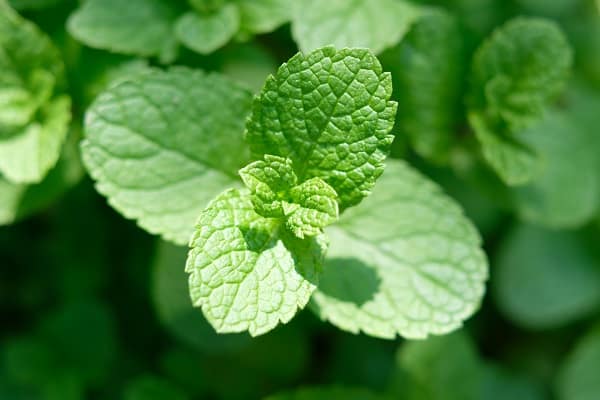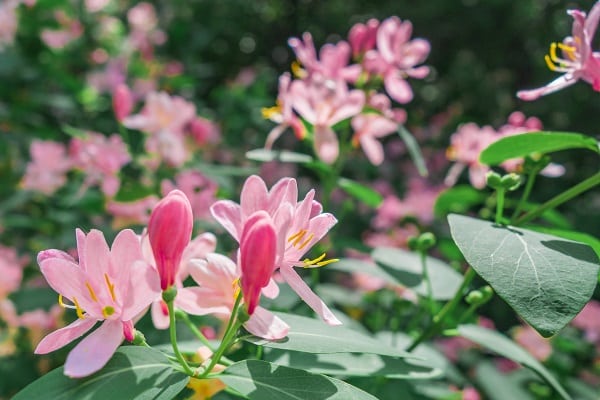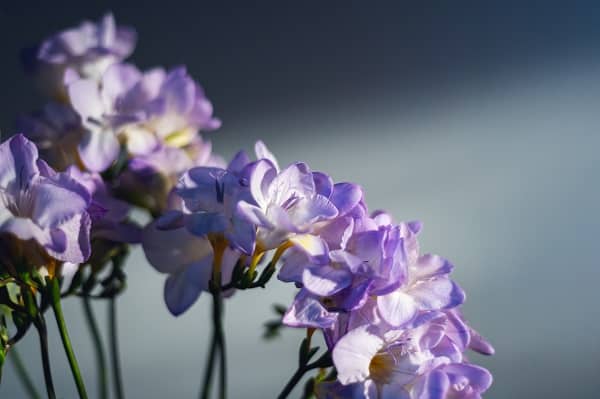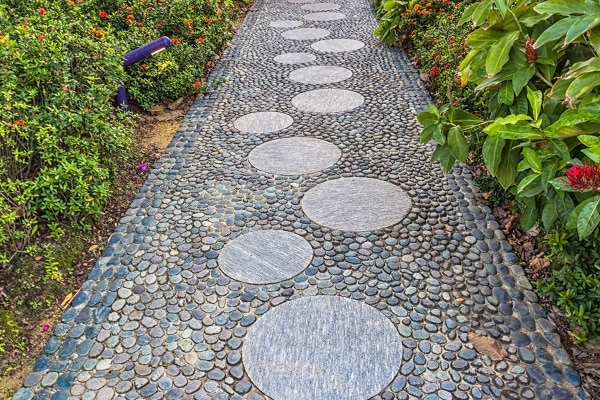Enhancing your outdoor living space with beautifully scented plants for walkways can transform a mundane walk into an aromatic journey. The soft rustle of leaves combined with the delightful fragrance of blossoming flowers is an enchanting encounter that leaves a lasting impression. Beyond their stunning visual appeal, these plants provide a sensory feast, turning your walkway into a pathway to tranquility. Each plant species has a unique aroma, adding depth to your landscape design and significantly improving the overall aesthetic. So, let’s explore some of the most delightful scented plants that can grace your walkways and immerse you in a world of fragrance.
Contents
- 1 The Allure Of Scented Plants
- 2 Understanding Your Walkway
- 3 Lavender: A Timeless Classic
- 4 Gardenia: An Exotic Touch
- 5 Jasmine: A Whiff Of Sweetness
- 6 Roses: The Quintessential Aroma
- 7 Mint: Refreshing And Invigorating
- 8 Lilacs: A Springtime Fragrance
- 9 Honeysuckle: A Sweet And Tantalizing Aroma
- 10 Freesia: A Burst Of Citrus
- 11 How To Arrange Scented Plants Along Your Walkway
- 12 Start Incorporating Scented Plants In Your Walkway!
The Allure Of Scented Plants
The charm of scented plants lies in their ability to engage one of your most evocative senses – smell. Just imagine coming home after a long day to be greeted by a wave of soothing fragrances from your garden. It’s a proven fact that scents can have a profound effect on your mood and well-being. Furthermore, the fragrance from certain plants can also keep pests away, enhancing the overall health of your garden. Thus, scented plants serve both practical and aesthetic functions in a garden landscape.
The joy of having scented plants along your walkway isn’t just about the beautiful aromas they produce; it’s also about the attraction they bring. Walkways filled with fragrant plants are more likely to attract beneficial insects and pollinators, fostering a healthier garden ecosystem. Moreover, the continuous bloom of these plants ensures an ever-changing palette of colors, textures, and fragrances throughout the seasons, keeping your walkway vibrant and enticing year-round.
Understanding Your Walkway
The first step in deciding which scented plants to add to your walkway is understanding your walkway’s conditions. Factors like sunlight exposure, soil type, space, and local climate can dramatically affect a plant’s growth and fragrance production. Therefore, before choosing your plants, observe your walkway at different times of the day to understand these aspects.
Certain scented plants prefer full sunlight, while others may thrive in partial shade. For example, roses and lavenders adore the sun, while certain varieties of jasmine do well in partial shade. Similarly, some plants, like mint, prefer well-draining soil, while gardenias love rich, acidic soil. By comprehending these conditions, you can ensure a healthy life for your plants and, in turn, a long-lasting and more vibrant fragrance along your walkway.
Lavender: A Timeless Classic
Lavender, with its timeless beauty and scent, has remained a favorite among gardeners for centuries. The distinctive aroma emanating from its delicate purple flowers is soothing and calming, often associated with relaxation and sleep enhancement. Lavenders are sun-lovers, thriving in full sun and well-draining soil. Additionally, they are drought-tolerant, making them an excellent choice for gardeners in warmer climates.
Besides their beauty and fragrance, lavenders are prized for their versatility. They can be used in various forms – dried for potpourri, infused in oils for skincare, or even used in culinary recipes. When planning for a walkway, consider planting lavender along the borders. This not only enhances the aesthetic appeal but also allows the aroma to waft freely, creating a delightful sensory experience as you traverse your path.
Gardenia: An Exotic Touch
For a touch of exoticness, consider gardenias. These evergreen shrubs are renowned for their intoxicating, sweet fragrance and creamy-white flowers. Gardenias prefer well-drained, acidic soil, and while they appreciate sunlight, they also need some shade, particularly in the afternoon. If your walkway offers these conditions, gardenias could be a perfect fit.
One important thing to note about gardenias is that they require a bit more care than other scented plants. They need regular watering and feeding, especially during their flowering period. However, the care you invest is well rewarded when the air fills with their rich, captivating fragrance. Plant them close to the walkway, allowing the scent to reach out and greet your visitors.
Jasmine: A Whiff Of Sweetness
Jasmine plants are synonymous with a sweet, pleasant aroma. These plants produce small, white, or yellow flowers that fill the night air with their intoxicating scent, offering a delightful olfactory treat during your evening strolls. Some jasmine varieties, like Jasminum officinale, prefer full sun, while others, like Jasminum sambac, can tolerate partial shade.
Jasmine plants are quite resilient, adapting to various soil types as long as it is well-drained. They are fast growers and can be trained to climb a trellis or frame a walkway, creating a visually appealing and aromatic passage. Walking under a jasmine archway in full bloom, releasing its potent fragrance into the evening air, is an experience second to none.
Roses: The Quintessential Aroma
No list of fragrant plants would be complete without the queen of flowers – the rose. Known for their exceptional beauty and fragrance, roses are a great addition to any scented walkway. There is a multitude of rose varieties available, each with its own unique scent profile. From the sweet, fruity aroma of a David Austin rose to the delicate, tea-like scent of a Hybrid Tea rose, there’s a fragrance to suit every nose.
Roses thrive in full sun and require well-draining soil rich in organic matter. A great tip for your rose walkway is to plant different varieties that bloom at different times of the year. This way, you’ll ensure a continuous display of vibrant colors and a delightful fragrance that keeps your walkway alive throughout the year.
Mint: Refreshing And Invigorating
For a more refreshing and invigorating scent, consider mint. Mint plants are easy to grow and extremely hardy, with a vigorous growth habit. They can tolerate a variety of light conditions, from full sun to partial shade, and prefer moist soil. The aroma they emit is cool and sharp, immediately recognizable, and associated with a sense of freshness.
Despite its many benefits, mint can be invasive due to its rapid growth habit. It is recommended to plant mint in containers or dedicated beds to prevent it from spreading uncontrollably. You can place these containers along your walkway, where every breeze will carry a waft of refreshing mint fragrance, instantly revitalizing your senses.
Lilacs: A Springtime Fragrance
Lilacs are deciduous shrubs known for their stunning spring display of fragrant purple blossoms. They are symbolic of early spring, and the fresh aroma that fills the air during their bloom season is loved by many. Lilacs thrive in full sunlight and prefer fertile, well-drained soils.
Despite their relatively short bloom period, the intoxicating fragrance and the breathtaking sight of lilac flowers make them a worthwhile addition to any scented walkway. Their vibrant clusters of flowers not only provide an excellent visual focal point but also a memorable olfactory experience. Picture yourself walking under a canopy of blooming lilacs, their sweet fragrance accompanying you every step of the way.
Honeysuckle: A Sweet And Tantalizing Aroma
Honeysuckles, with their sweet, tantalizing aroma, are an excellent choice for a fragrant walkway. These climbing plants produce tubular flowers in vibrant shades of yellow, white, and pink, attracting both hummingbirds and butterflies. Honeysuckles enjoy full sun to partial shade and are quite adaptable to different soil types as long as it drains well.
The heady perfume of honeysuckles, particularly noticeable on warm summer evenings, can elevate your garden walks. They can be trained onto arches or pergolas along the walkway, creating a beautiful, fragrant tunnel that transports you into a world of sweet, floral notes.
Freesia: A Burst Of Citrus
Freesias are bulbous plants admired for their brightly colored, trumpet-shaped flowers and citrusy fragrance. These sun-loving plants bloom in the early spring, filling the air with a fresh, sweet scent reminiscent of a mix of fruit and honey. Freesias prefer full sunlight and well-drained soil.
However, as they are native to South Africa, they are not very frost-tolerant and may need to be dug up and stored in colder climates. Incorporate freesias into your walkway for a vibrant burst of colors and an energizing citrus fragrance that genuinely heralds the arrival of spring.
How To Arrange Scented Plants Along Your Walkway
When it comes to arranging scented plants along your walkway, the goal is to maximize fragrance while maintaining visual appeal. One way to achieve this is by layering scents, which involves planting a variety of fragrant plants that bloom at different times of the year. This guarantees a continuous display of colors and a variety of scents throughout the seasons.
You can also plan your walkway based on the time of day each plant releases its scent. For instance, moonflowers and some jasmine varieties are more fragrant at night, while roses and lilacs release their aroma during the day. Strategically positioning these plants along your walkway can provide you with a delightful aromatic journey, no matter the time of day you choose to take a stroll.
Start Incorporating Scented Plants In Your Walkway!
Incorporating scented plants into your walkway landscape transforms it into more than just a path — it becomes an immersive journey of the senses. From the calming lavender to the exotic gardenia, the sweet jasmine to the quintessential rose, each of these plants contributes its unique aroma and character to your walkway. With careful selection and arrangement, you can create a walkway that not only welcomes your guests with an enchanting array of fragrances but also provides a sensory haven for you to escape and unwind.

